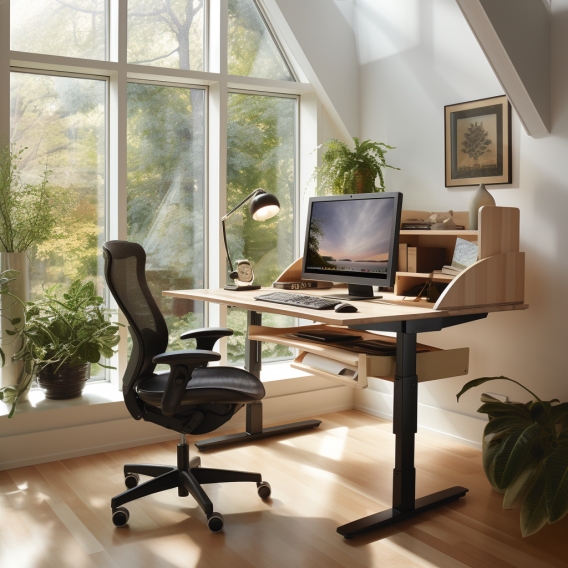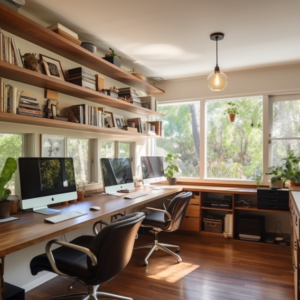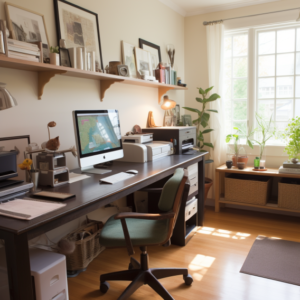Creating a comfortable and ergonomic home office is essential for your well-being and productivity. Whether you work remotely or simply need a space for occasional tasks, investing in ergonomic solutions can make a significant difference in your work experience. In this article, we’ll explore various ergonomic solutions to help you design a workspace that prioritizes your health and comfort.
1. Adjustable Desk:
Invest in an adjustable desk that allows you to switch between sitting and standing positions. This flexibility can reduce the strain on your back and neck associated with prolonged sitting. Look for desks with smooth height-adjustment mechanisms for ease of use.
2. Ergonomic Chair:
Choose an ergonomic chair designed to support your lower back and maintain proper posture. Features to consider include lumbar support, adjustable armrests, and a breathable mesh backrest. Make sure the chair is the right size for your body to provide optimal comfort.
3. Monitor Position:
Position your computer monitor at eye level to reduce neck strain. Consider using a monitor stand or an adjustable monitor arm to achieve the correct height. Additionally, use an external keyboard and mouse to maintain a comfortable typing and viewing position.
4. Proper Lighting:
Ensure your workspace has adequate lighting to reduce eye strain. Use natural light when possible and supplement it with task lighting, such as a desk lamp with adjustable brightness. Position the light source to minimize glare on your screen.
5. Cable Management:
Organize and secure cables to prevent tripping hazards and create a tidy workspace. Cable clips, cable sleeves, and cable trays can help keep cords out of the way and maintain a clean look.
6. Ergonomic Accessories:
Consider ergonomic accessories like a footrest, keyboard tray, and wrist support. These accessories can improve your posture and reduce the risk of discomfort or repetitive strain injuries.
7. Noise Reduction:
Minimize distracting background noise by using noise-canceling headphones or white noise machines. A quieter environment can enhance concentration and overall comfort.
8. Movement Breaks:
Incorporate short breaks into your workday to stretch and move around. Set a timer to remind yourself to stand, walk, or perform simple exercises to prevent stiffness and maintain circulation.
9. Declutter Your Workspace:
Keep your home office organized and free of clutter. A clutter-free environment can help reduce stress and make it easier to focus on tasks.
10. Ergonomic Assessments:
Consider scheduling an ergonomic assessment or consultation with a professional who can provide personalized recommendations based on your specific needs and workspace setup.
Remember that ergonomic solutions should be tailored to your body and work habits. Regularly assess your home office setup to ensure that it continues to meet your comfort and ergonomic needs. By prioritizing ergonomics, you can create a home office that promotes both productivity and well-being.



